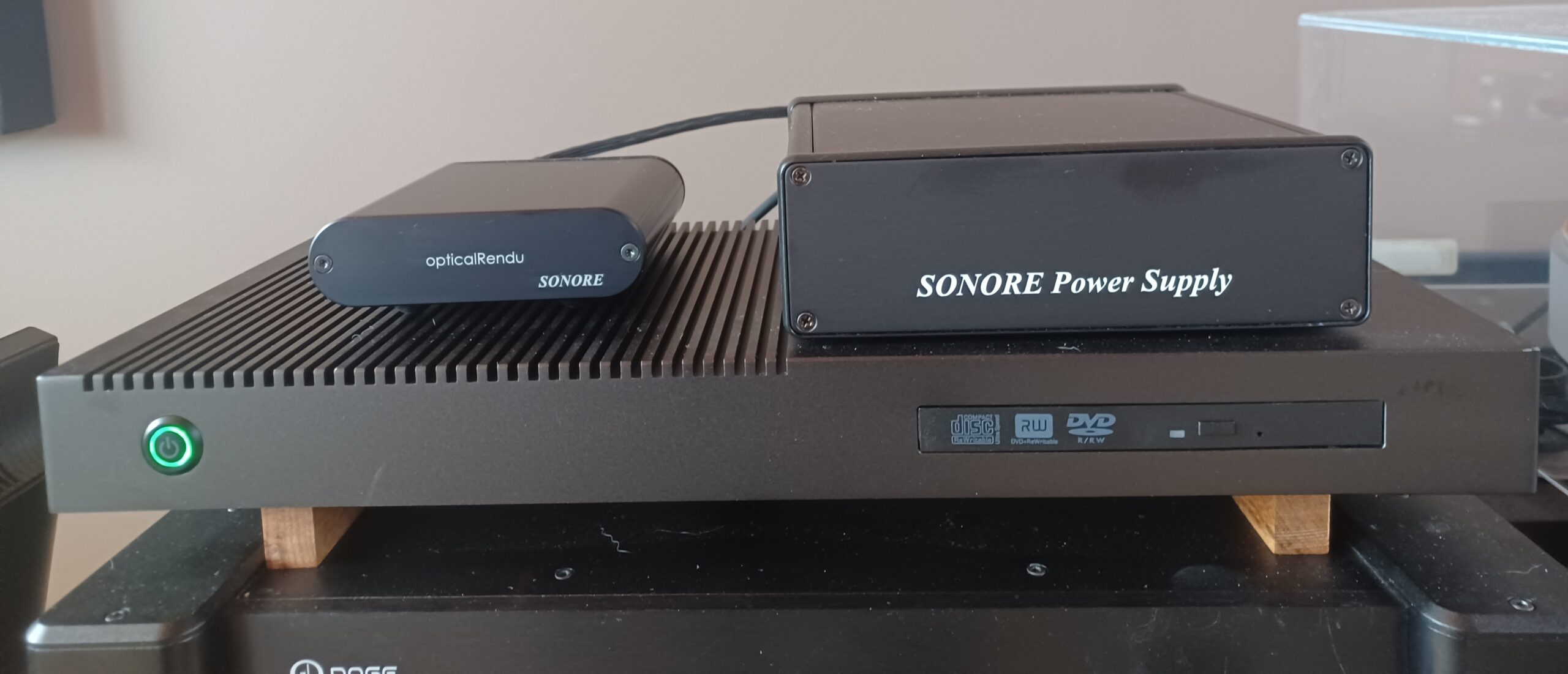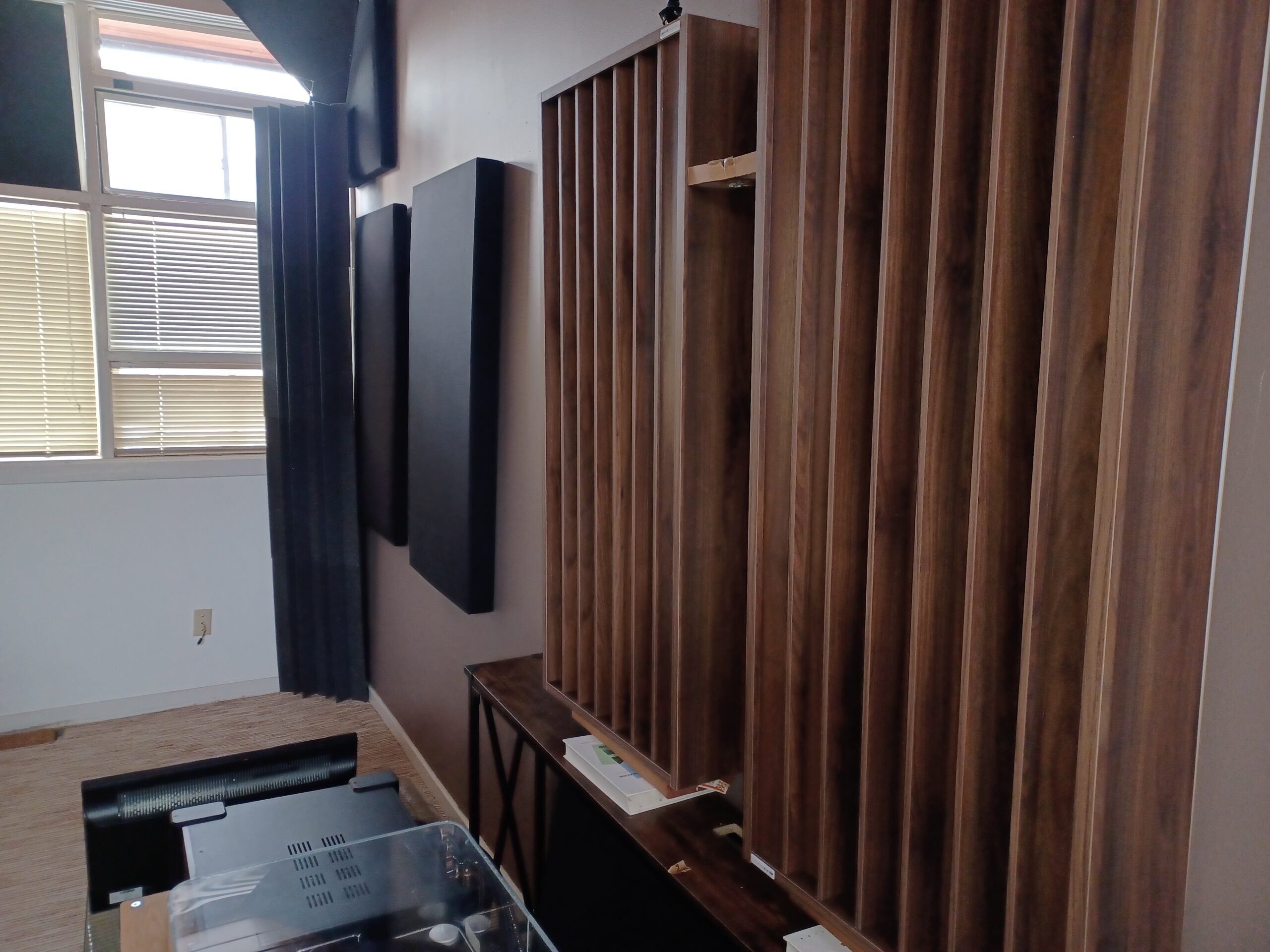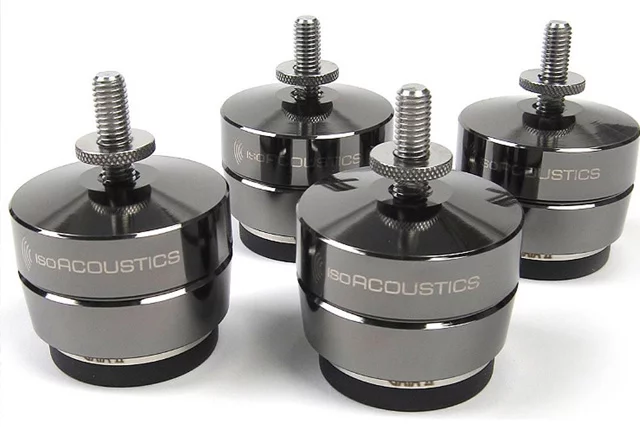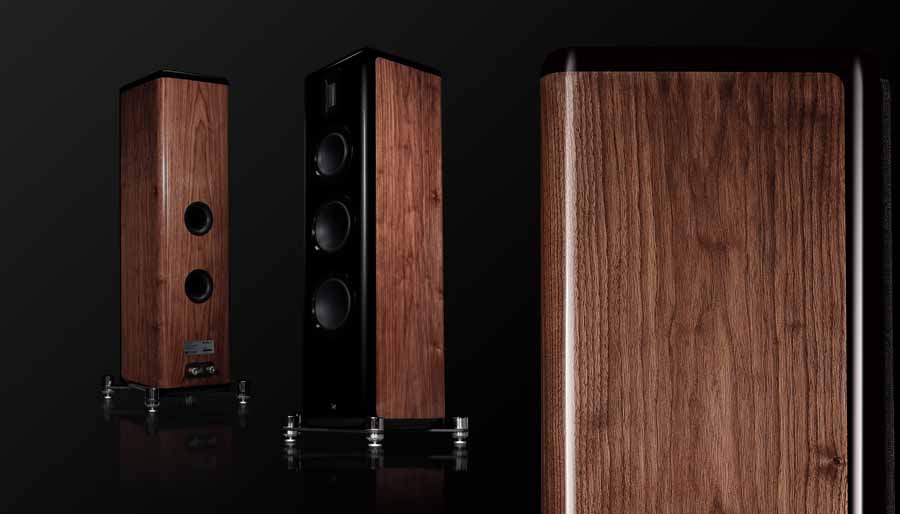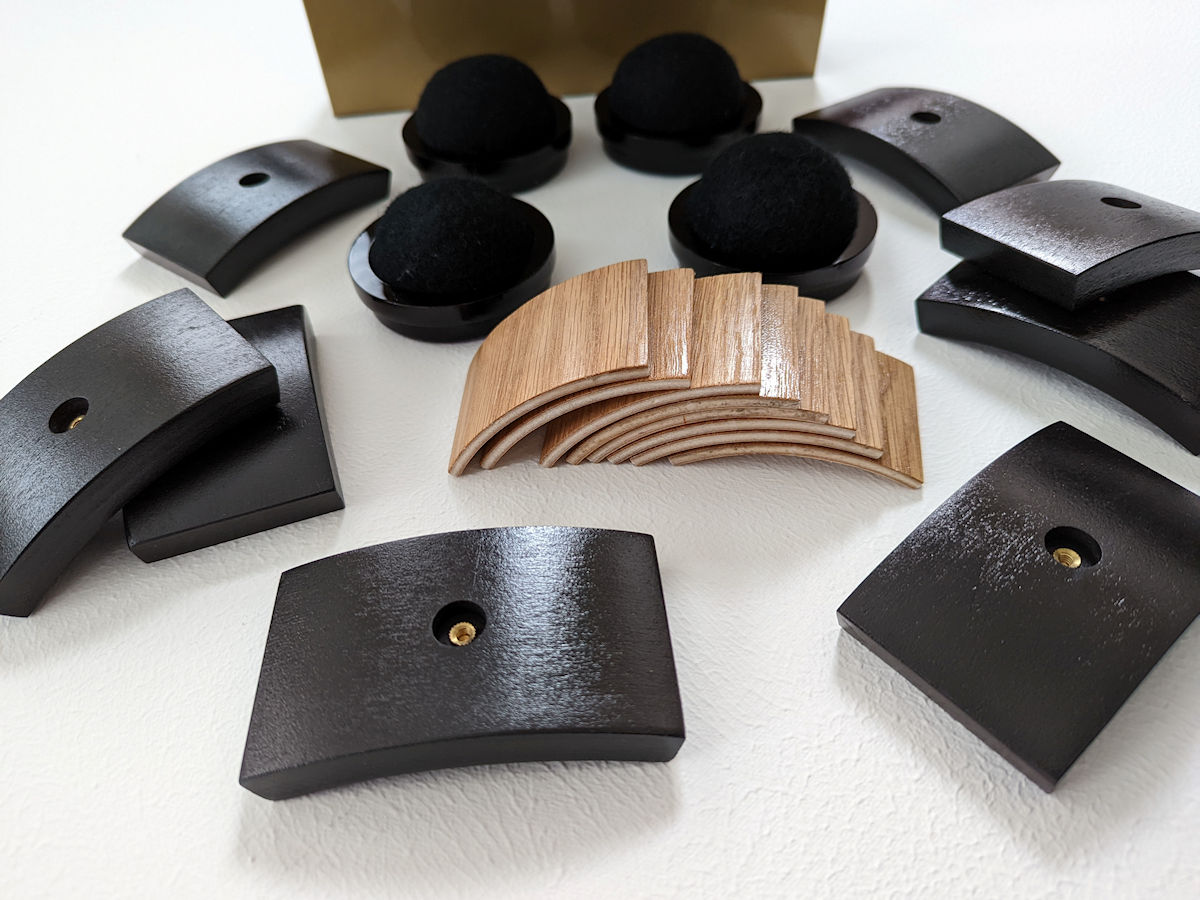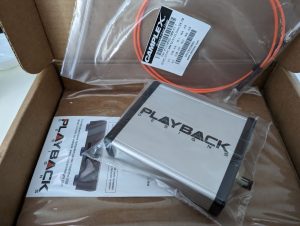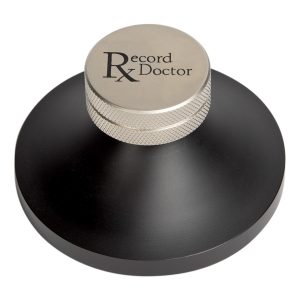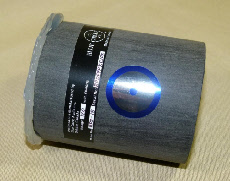It's taken me more time (years) to get serious about a new rack than any other component I've ever bought. My room and system have been so cooperative that for the past few years I've spent more time listening and looking for new music rather than fret about components, cables, room treatments, or a rack. I'm not complaining. Isn't that what our hobby should really be about, the listening, the enjoyment? So many of us consider racks an afterthought. Are they a component or are they furniture? Not sure I can really answer that, but I'm thinking a little of both. Should you invest your very hard earned money—which has quickly lost worth even compared to a few short months ago—in a proper audio rack? The rack upgrade path can be expensive. I just read a review on a rack that cost $30k. For me, and I think for most, that's never going to happen.
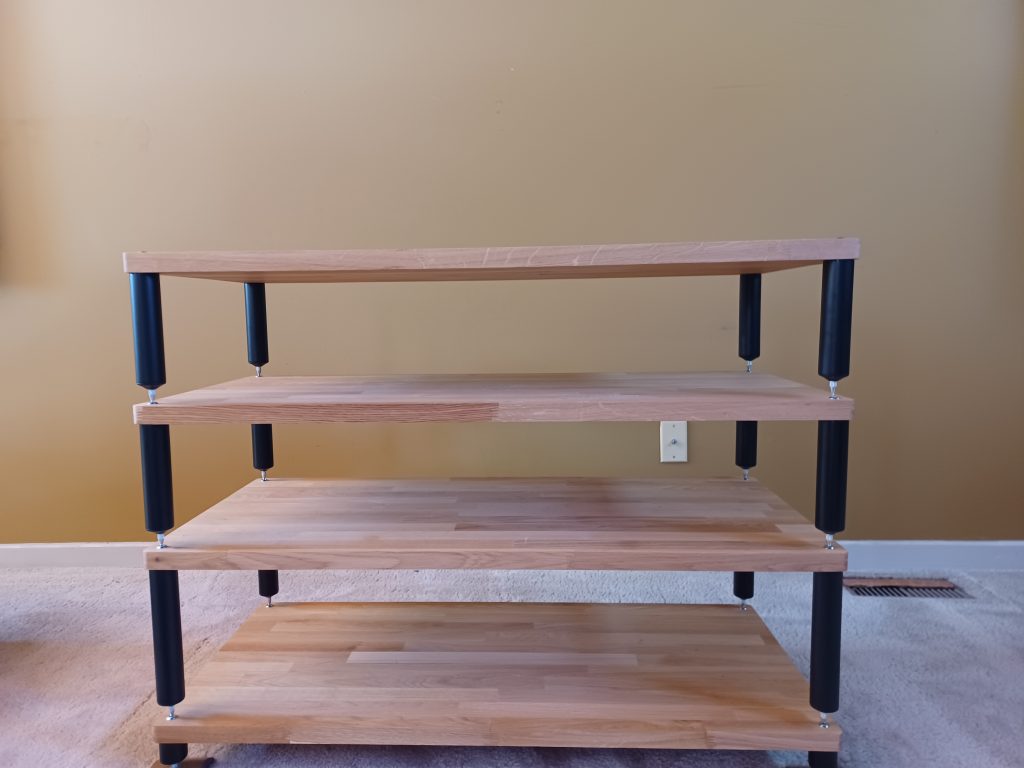
The Atacama Apollo Storm
I really can't remember when I bought the Sanus rack I've been using. I've had it for at least 10 and maybe 15 years. And I can't fault it. It's been a good performer and really didn't look terrible for the $179 I spent on it long ago. You'd probably find it in the "AV Furniture" section. At the time I was looking for a decent low-profile rack that didn't interfere with the center image. It fulfilled those requirements. Over the years, various vibration mitigating tweaks complimented it to help performance, yet I always knew it could be better.
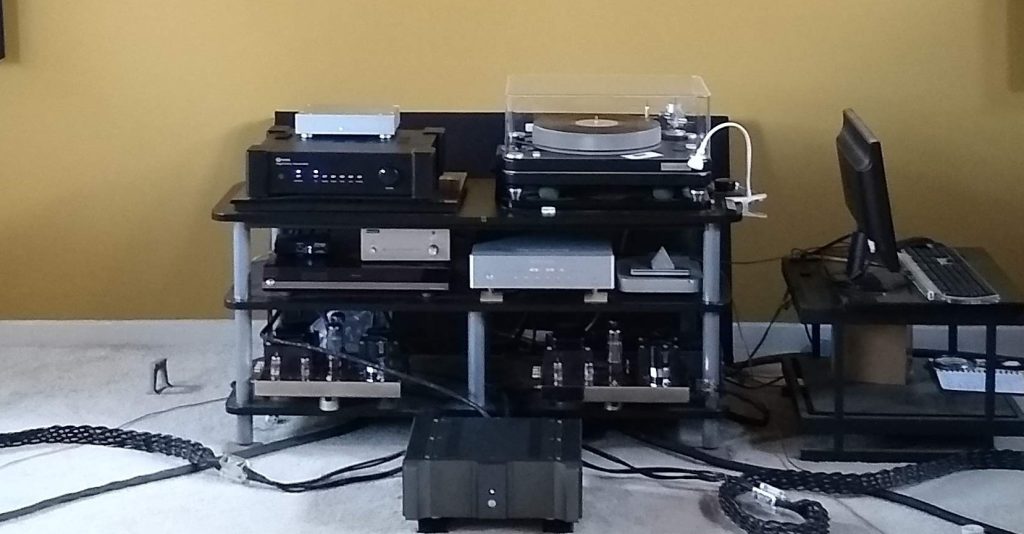
The Oldie
After researching racks for a long time I decided the Atacama Apollo Storm series might fit my needs. I was looking for a rack that was somewhat affordable, well-constructed, good looking, and should decrease vibration well enough for me to notice an improvement. After seeing and hearing an Atacama rack at a friend's place I felt confident enough to contact Carl James (who was very knowledgeable and answered all my questions) at USA HiFi /Canadian HIFi and request a review sample.
Atacama racks have been available in the UK (where the company is headquartered) for a long time. They also sell TV racks, speaker stands, and power cables. At first I thought these racks were the typical designed in (insert country of design) and made in China. But no, made in Great Britain. Why is it audiophiles seem to trust a product more if it's made in the same country it's designed in? I do, but I can't tell you why. Atacama started in 1969 as a subcontractor in the British Aerospace industry. Seems quite a few audio specialty companies have the similar beginnings.
I dug into the Atacama site and found that "each shelf module is precision cut on a CNC machine to ensure consistency of fit and performance, then hand finished by dedicated craftsmen to enhance the visual appeal of the natural wood. First, a polymer isolation disc separates the outer leg collar from the wood forming a barrier between each of the wood and outer leg components. The second line of isolation is the leg spike cap. This too is a polymer construction, so the leg outer collar is completely isolated from residual sonic feedback present when playing music. Inside each of the leg spike caps a press fit brass screw thread has been inserted. (Brass being chosen for its slow energy proliferation speed) with the third and final level of isolation has been achieved with the use of fully adjustable 8mm Bright Zinc Plated steel spikes and matching lock nuts."
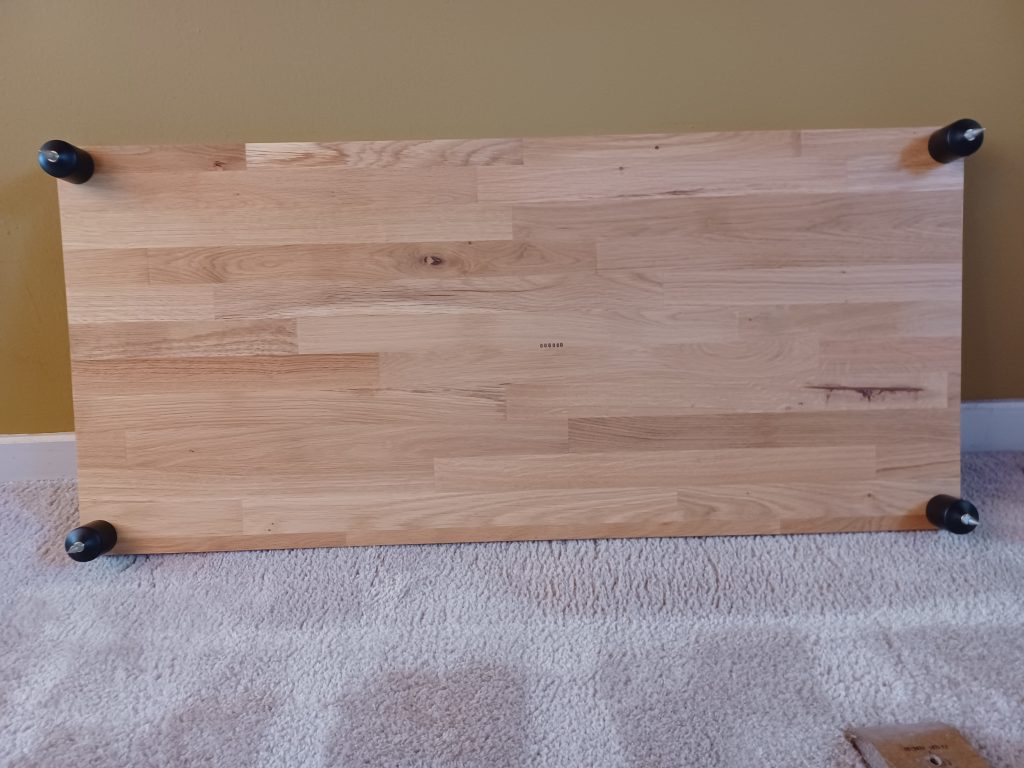
Shelf From the Bottom
This is a rack you need to assemble. I wasn't sure what to expect, but the process was fairly easy. Because each shelf is independent and modular, you just need to attach and tighten four legs and spikes per shelf, then stack each shelf. Note that the shelves are consistent, but you can choose different leg sizes to configure the height of each shelf. I do recommend getting some help placing and stacking each shelf. Not only to keep the spikes from scratching the oak on the lower shelf, but to keep from hurting yourself. If you are doing this solo, positioning the heavy shelves could definitely put a hurt on the lower back.
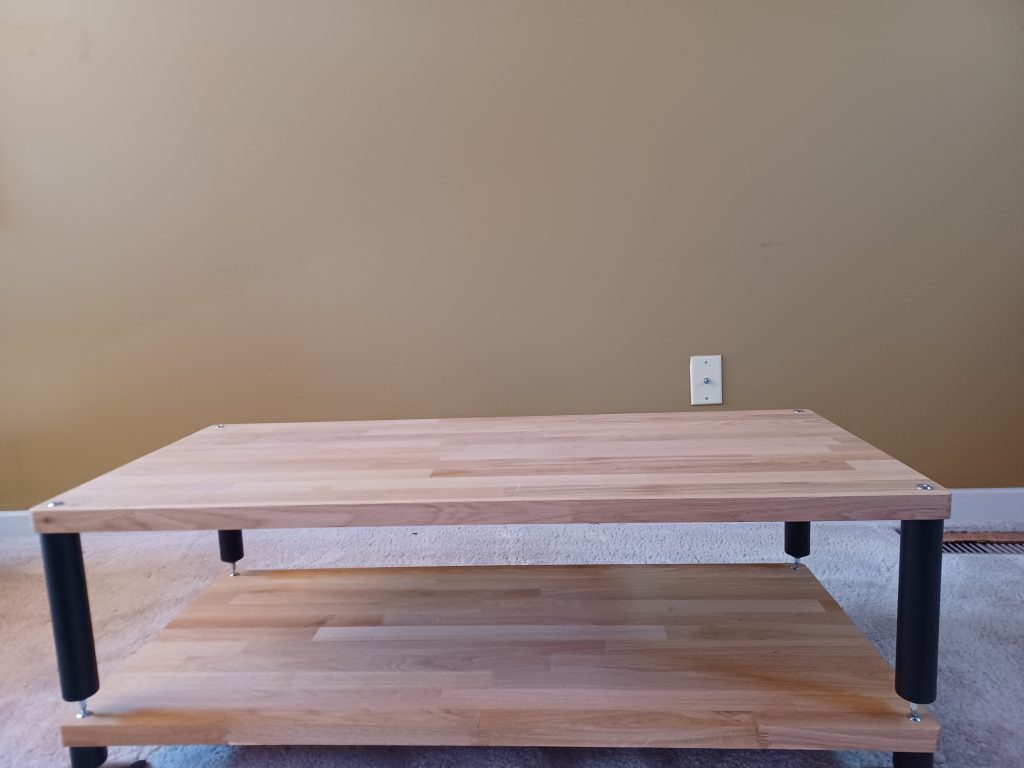
A Module
After assembly, the displaced components and cables were transferred to their new support system. While this was accomplished I started to get a feel for the Apollo Storm. Yes, I felt the weight of the shelves during assembly, but with the shelves stacked one on each other I felt the entire rack was more solid as a unit than each of its parts. A good sign.
Note that the oak shelves are unfinished. The raw wood looks good, and reminds me of the big, heavy slab of butcher block that my kitchen island features. I'm thinking it might benefit from some of the oil I use on said butcher block. I'll probably try it on the bottom of one of the shelves first.
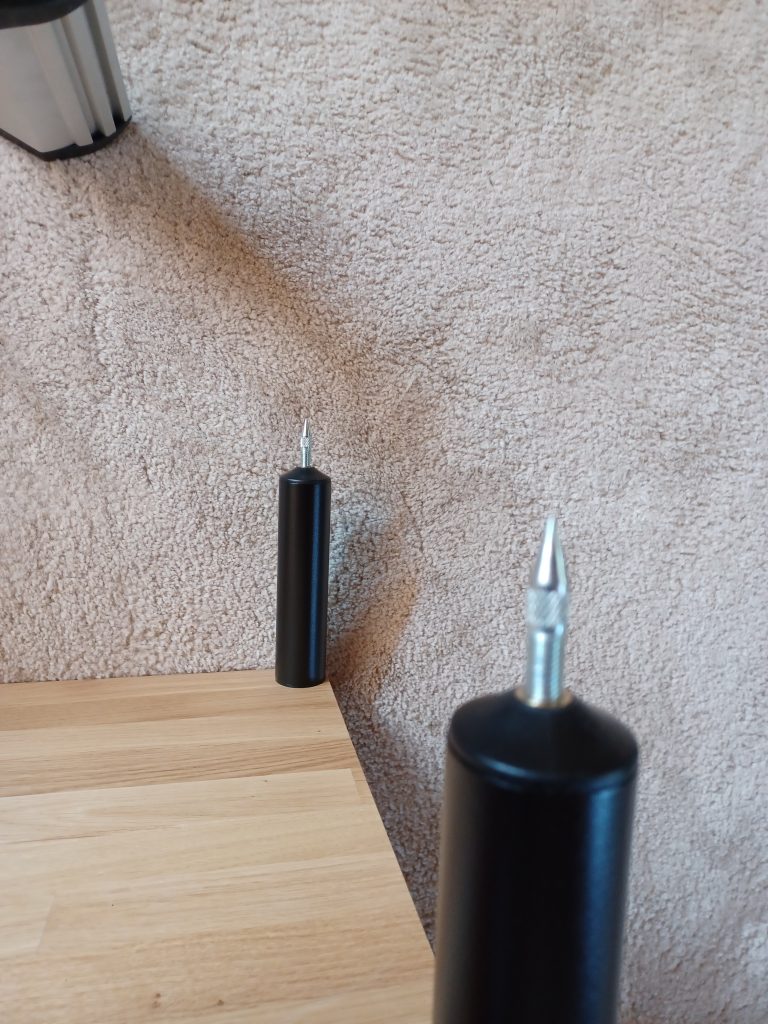
The Spikes
Before I did any listening I sat in the listening position for a while and admired the look. Sophisticated, yet understated. A little higher than my old rack, but also narrower, I now had four shelves instead of three, so the trade-off was about the same in surface space. I could see straight off that the oak shelves would not show dust as easily as the black shelves from the old rack did (yay!). Also catching my eye were the spikes on the bottom of each shelf, looking a lot like speaker bases, and identifying the Apollo as an audiophile product. The rack looked great and felt firm, resting on my floor of concrete slab. After inspecting the new wiring I corrected a channel reversal on one of the interconnects, then I turned on the system and let the tubes warm up with music playing for a half hour or so.
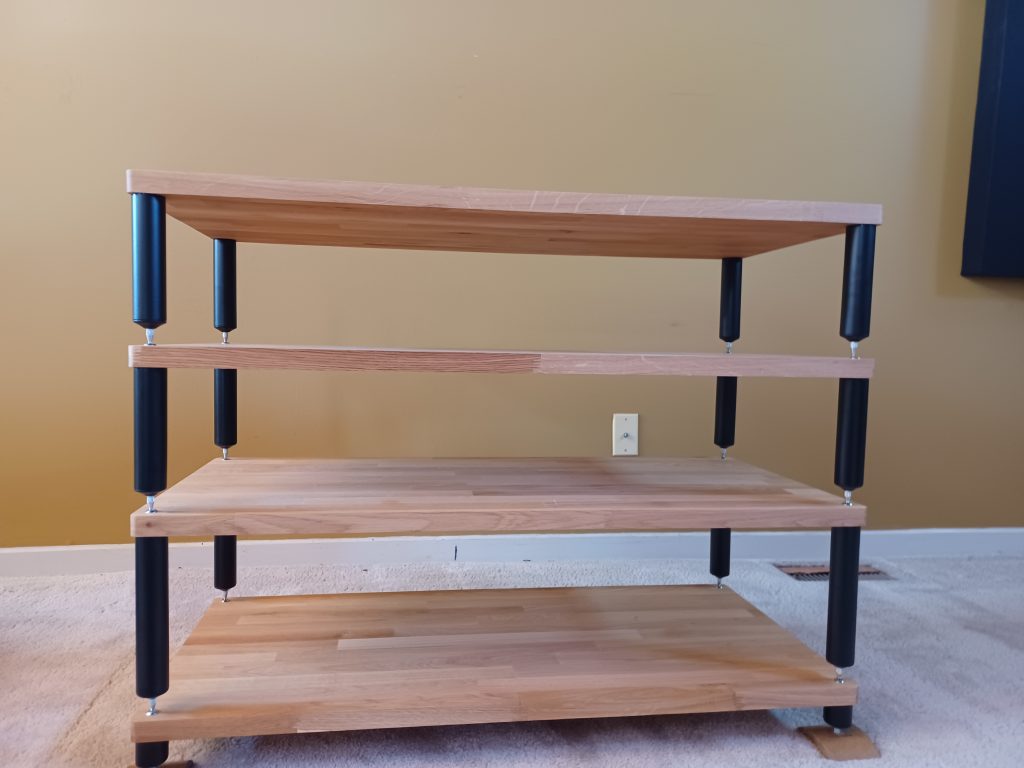
Fully Assembled
After starting Roon on my iPad and selecting Qobuz, I queued up some music I was familiar with. The first word that came to mind was foundation. It was obvious that my system was now built on a more solid base. It wasn't day and night, but things felt more fundamentally right from the bottom up.
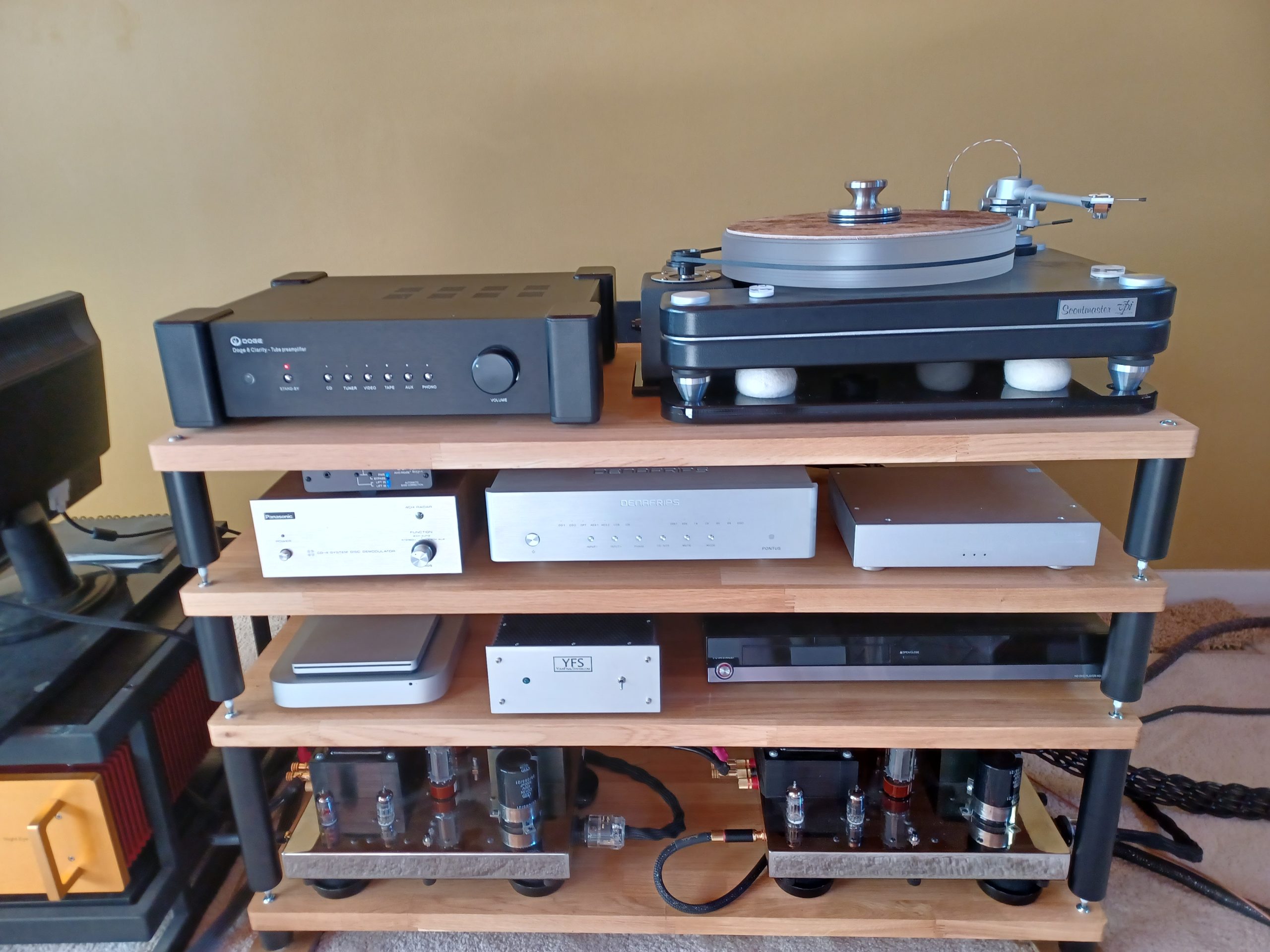
The New Loaded with Components
I listened for a couple of hours that night, and repeated over the next few days. It became quickly obvious that the Apollo Storm gave the system a more pristine sound and a more believable musical presentation. The bass was not louder or more extended, but it was somewhat better defined. It was easy to hear the noise floor drop, with slightly blacker backgrounds. The soundstage was more distinct and everything seemed tighter in its own little way, lightly separating instruments and voices. I did not notice any difference in scale or textural presentation. Attack was a bit quicker, and I felt this more with acoustic and orchestral instruments. All the images seemed to have an added bit of dimension. The system displayed enhanced dynamics, probably more on the micro side than the macro. I heard a nice sense of ease and sibilance (the right kind) on voices. The singer was more present in the room. Focus, resolution, and precision were all marginally but consistently improved. The system as a whole displayed more grace.
None of the above observations was a colossal, jaw-dropping change, but they were easily identifiable and enhanced the joy I get from listening. In this sense I the Apollo Storm should be classified as an audio component. It became part of the system, not just a piece of furniture, adding virtue to the overall presentation. I felt the Apollo Storm and the floor of my listening room gelled. The thick concrete slab my house sits on might have given it an unfair advantage, but hey some of us have challenging room dimensions, some of us have issues with old wood floors. I'm pretty sure the Storm would improve your system whatever surface you placed it on. My biggest takeaway is how rock-solid the rack, as foundation of the entire system feels. It gives you confidence.
Can I recommend this rack? Easily. It's stylish, well-built, and improved the sound of components placed upon it. Their performance was noticeably and undeniably better. It has a synergy with audio components. I'm thinking the only improvement you could make would be to maybe replace the spikes with some upscale aftermarket models. Looking for that Goldilocks-just-right balance? I feel the Apollo Storm intersects the sweet spot of affordability and performance, and could be the right choice for those who want to upgrade but want to keep their purchase (somewhat) affordable. It's a winner in the furniture category and a winner in the component category. I like win-wins. I'm keeping it.
Atacama Apollo Storm 10 Four Module Rack
Retail: $1580
Atacama
US Distribution
Canadian Distribution




